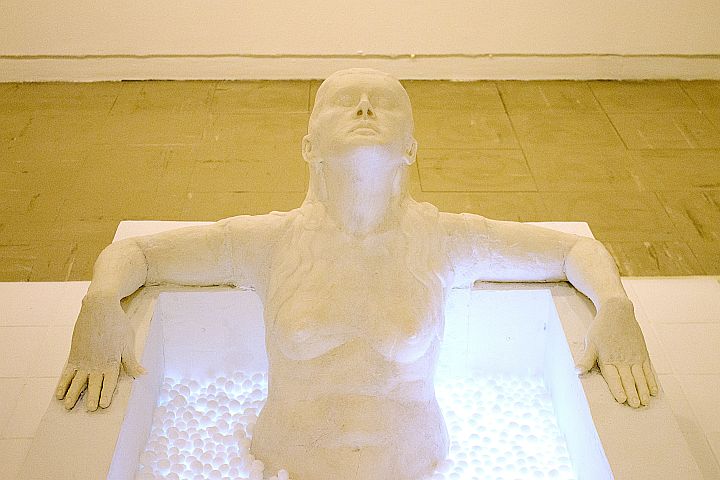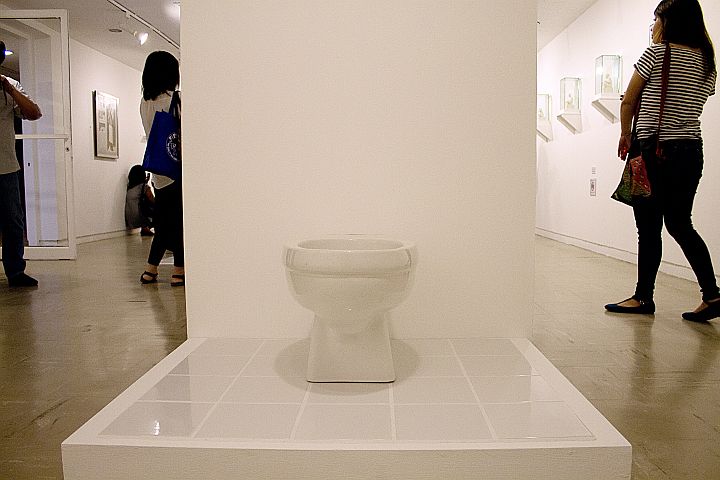
HE MAKES art out of ordinary laundry soap. But it’s far from being ordinary art. The artist Nomar Miano carves images of prophets and philosophers, naked and in meditative poses, out of blocks of white Perla, the local brand of soap. It’s very meticulous work and one wonders why he would do it on something that easily melts. People told him that he should have cast those figures in resin or plaster.
But for Nomar, the choice of soap is symbolic. The work has to be ephemeral. The soap actually stands for our obsession with hygiene and purification. And there is more to it than just practical concern for cleanliness.

For the artist, it could hint a drive for higher forms of purification. Cleanliness often suggests orderliness and rationality. On the other hand, too much drama leads to chaos.
Underlying this urge for hygiene and perfection is contempt for all forms of impurity and imperfection. We want to rid ourselves of disease, sin and madness. We want to be pure. We forget, however, that this obsessive-compulsive drive for perfection is itself a form of madness. Too much rationality makes us control freaks. Contempt for other people’s mistakes makes us self-righteous.
This kind of thinking leads to notions of perfect worlds, of salvation. The promise of heaven is paralleled by its secular counterpart, the dream of utopia at the end of history. For Nomar, “the dream of secular utopias, which aim to free man from economic exploitation, mimics the promise of sectarian revelation.”
The earnestness to convert pagans or heretics often result in violence. Revolutions promising a more just society end up with violent purges and mass executions. Contempt for the weaker race leads to ethnic cleansing. In this sense, cleanliness negates Godliness.
Thus, in “Persil,” his recent solo exhibition at the Cultural Center of the Philippines, Nomar gathers soap sculptures of prophets and thinkers that promised salvation or looked forward to perfect societies, a few paintings on the same theme of sanitation, and installations of ordinary bath articles and toilet fixtures.

Upon entering the small gallery, one is repulsed by the strong toxic smell coming from napthaline balls that fill a bathtub where a life-size soap sculpture of a naked woman is reclining. This uniquely adds the dimension of smell in a visual art exhibit. We feel assaulted by the toxic smell, like we are an unwanted insect driven away by pesticide.
With the sculptures of prophets and philosophers displayed in glass boxes and lined on walls like an altar and bath fixtures installed in certain areas, the gallery has the combined ambiance of a prayer room and bathroom. The gallery becomes the site for the meeting of the sacred and the profane.
Indeed, the show “explores the spiritual and profane concept of cleansing.” It tries to expose that which we want to hide or wash away with constant cleansing and grooming. It tries to make us
consider if our rejection and denial of the unsightly parts of reality is not itself a symptom of a different kind of sickness, both physical and mental. Isn’t excessive obsession with sanitation a symptom of insanity?
Art, after all, cannot always be too beautiful or sane. History has shown how dictators in the past tried to sanitize society with art.



